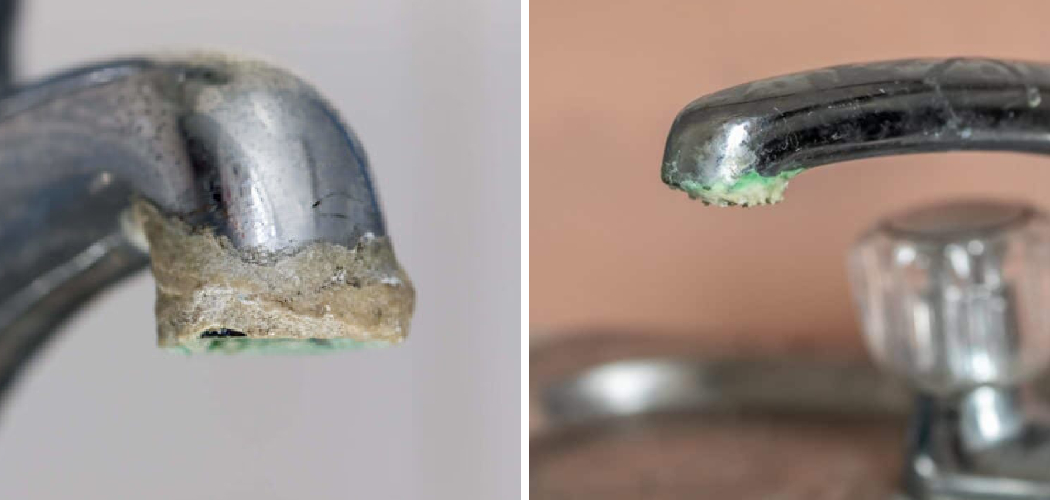Calcium buildup, often seen as white, crusty deposits around faucets, is a common issue in homes with hard water.
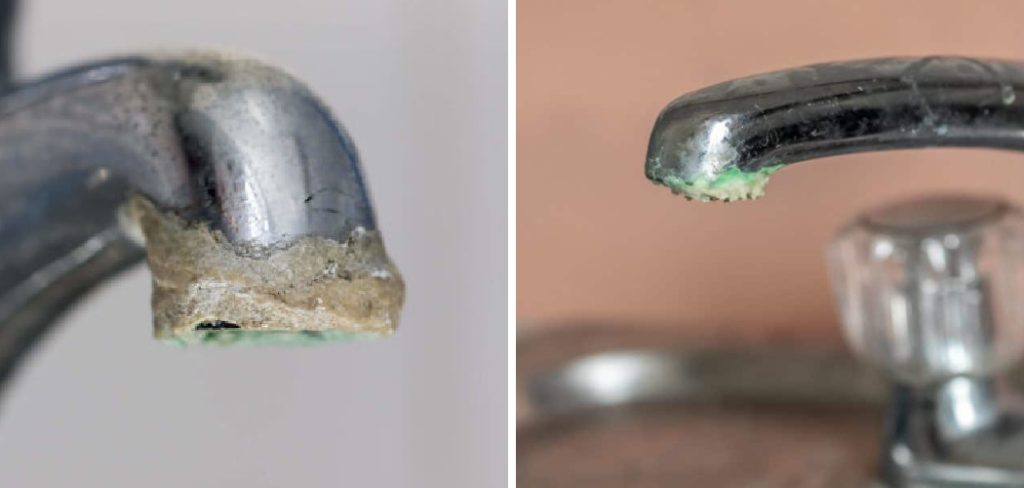
These deposits not only detract from the appearance of your fixtures but can also impair their functionality over time. Understanding how to prevent and manage calcium buildup is essential for maintaining the longevity and aesthetics of your faucets.
This guide on how to prevent calcium buildup on faucets will walk you through effective methods to keep your faucets free from unsightly calcium deposits.
What is Calcium Buildup?
Calcium buildup, also known as limescale, is a result of hard water. Hard water contains high levels of mineral ions such as calcium and magnesium. When the water evaporates or is heated, these minerals are left behind, forming a white residue on surfaces like faucets.
It is important to note that calcium buildup not only affects the appearance of your faucets but can also clog or damage them. This can lead to reduced water flow and even leaks if left untreated.
Benefits of Preventing Calcium Buildup
Preventing calcium buildup on your faucets not only keeps them looking clean and shiny but also has other benefits, including:
Increased Longevity of Fixtures:
Regularly removing and preventing calcium buildup can help extend the lifespan of your faucets.
Improved Water Flow:
Without mineral deposits blocking the flow, you can enjoy full water pressure from your faucets.
Reduced Maintenance Costs:
By preventing calcium buildup, you can avoid costly repairs or replacements down the line.
Now that we understand the importance of preventing calcium buildup, let’s dive into some practical tips to help keep your faucets free from limescale.
7 Step-by-step Guidelines on How to Prevent Calcium Buildup on Faucets
Step 1: Use a Water Softener
One of the most effective ways to prevent calcium buildup is by using a water softener. This device works by removing mineral ions from hard water, leaving softer and less damaging water to flow through your pipes and fixtures. The water softener needs to be regularly maintained, and salt or potassium pellets should be added as needed.
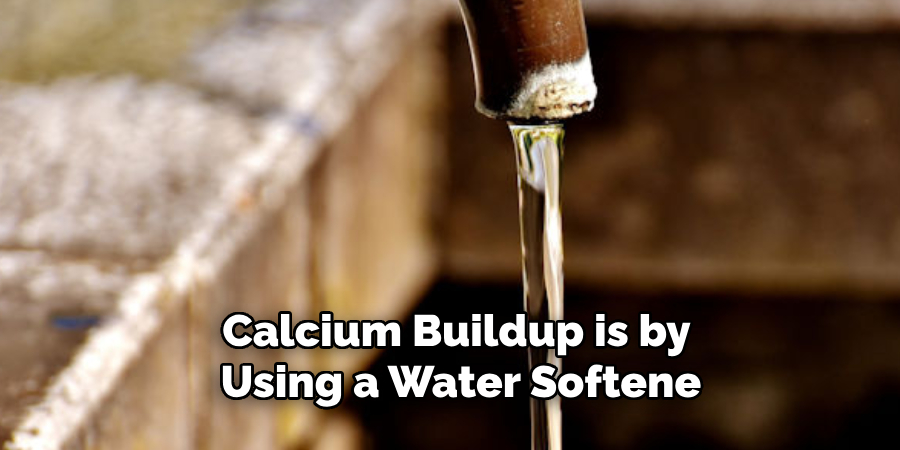
Step 2: Regular Cleaning
Regularly cleaning your faucet with a mild, non-abrasive cleaner can help prevent limescale buildup. It is best to use a cleaner specifically designed for removing mineral deposits. You can also make your own cleaning solution by mixing equal parts of water and white vinegar. It is important to avoid using harsh chemicals or abrasive cleaners as they can damage your faucet’s finish.
Step 3: Wipe Down After Use
After using the faucet, it is important to wipe it down with a soft cloth to remove any water droplets. This helps prevent water spots and mineral deposits from forming. You can also use a squeegee or a towel specifically designed for drying faucets. But be sure to use a soft material to avoid scratching the surface.
Step 4: Use Lemon Juice
Another natural remedy to prevent calcium buildup is using lemon juice. Lemon contains citric acid, which helps dissolve mineral deposits.
Simply rub half of a lemon on the faucet and let it sit for a few minutes before rinsing it off. You can also mix lemon juice with equal parts of water and use it as a cleaning solution.
Step 5: Install a Faucet Aerator
A faucet aerator is a small device that attaches to the end of your faucet, adding air to the water flow.
This not only reduces water waste but also prevents mineral buildup by slowing down the water flow and reducing splashing. You can easily install a faucet aerator yourself, and it is an affordable and effective way to prevent calcium buildup.
Step 6: Soak in Vinegar
For tougher calcium buildup, you can soak your faucet in white vinegar. Fill a plastic bag with vinegar and secure it around the faucet using a rubber band, making sure that the affected areas are fully submerged. Leave it overnight before rinsing it off in the morning. This will help dissolve and loosen any stubborn mineral deposits.
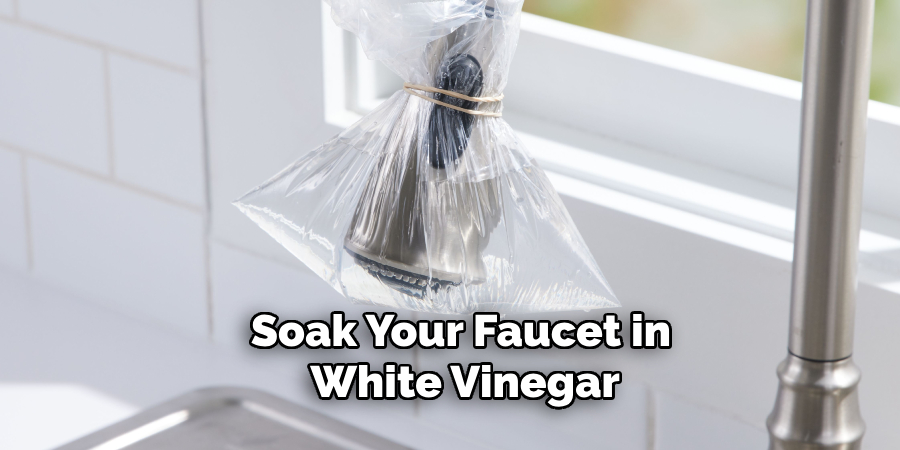
Step 7: Seek Professional Help
If you have severe or persistent calcium buildup on your faucets, it is best to seek professional help. A plumber can assess the situation and recommend a suitable solution, such as installing a water softener or replacing worn-out fixtures.
Following these guidelines on how to prevent calcium buildup on faucets will help you prevent calcium buildup and keep your faucets looking clean and functioning properly.
By taking care of your fixtures, you can save money and maintain the overall aesthetic of your home. Remember, prevention is key when it comes to tackling calcium buildup on faucets. So be proactive in maintaining your plumbing fixtures and enjoy the benefits of clean and efficient water flow. Happy cleaning!
Additional Tips for Maintaining Your Faucets
- Use a toothbrush or other small brush to clean hard-to-reach areas on your faucet.
- Avoid using steel wool or abrasive sponges when cleaning, as they can scratch the finish.
- Regularly check and replace any worn-out parts, such as O-rings and gaskets, to prevent leaks and damage.
- Consider investing in a water filtration system for your entire home to improve the quality of your water and reduce mineral buildup.
- If you notice any signs of calcium buildup, such as white spots or discoloration on your faucets, address them immediately to prevent further damage.
- Stay informed about the water quality in your area to better understand how often you may need to clean and maintain your faucets. Overall, regular maintenance and preventative measures are key to keeping your faucets free from unsightly and damaging calcium buildup. By following these tips, you can ensure that your fixtures not only look great but also function properly for years to come. Happy cleaning!
Safety Considerations
When dealing with calcium buildup and employing various cleaning methods, it is crucial to prioritize safety. Here are some essential safety considerations to keep in mind:
Use Protective Gear:
When using cleaning solutions, especially those involving vinegar or lemon juice, ensure you wear protective gloves to prevent skin irritation. Safety goggles are also a good idea to protect your eyes from potential splashes.

Proper Ventilation:
Ensure adequate ventilation in the area where you are cleaning if you’re working in a confined space, open windows or use exhaust fans to avoid inhaling fumes from the cleaning solutions.
Follow Product Instructions:
When using commercial cleaning products, always read and follow the manufacturer’s instructions carefully. Misuse of these products can cause damage to your fixtures and even pose health risks.
Store Chemicals Safely:
Keep all cleaning agents and chemicals out of reach of children and pets. Store them in a cool, dry place and ensure containers are tightly sealed to prevent accidental spills or exposure.
Avoid Mixing Cleaners:
Do not mix different cleaning solutions, as this can cause dangerous chemical reactions. For example, mixing bleach with vinegar or ammonia can produce toxic gases.
Test on Small Areas:
Before applying a new cleaning solution broadly, test it on a small, inconspicuous area of the faucet. This helps ensure it won’t damage the finish or cause discoloration.
By adhering to these safety considerations, you can effectively manage calcium buildup on your faucets without compromising your health or the integrity of your plumbing fixtures.
Case Studies and Expert Insights
Case Study: The Johnson Family’s Struggle with Hard Water
The Johnson family noticed persistent white spots and reduced water flow from their faucets. After multiple failed attempts with various store-bought cleaners, they decided to seek professional help. A local plumber assessed their situation and discovered they had hard water, a common issue in their area.
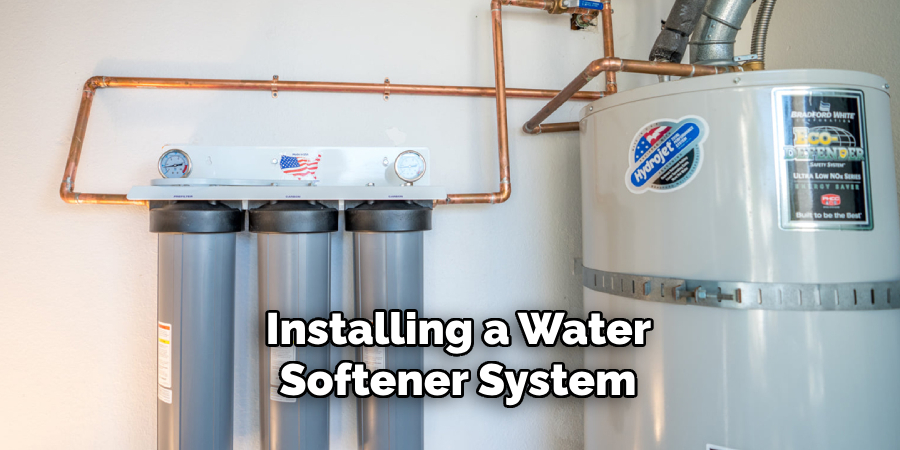
The plumber recommended installing a water softener system in their home. Within a few weeks of installation, the Johnsons noticed a significant reduction in calcium buildup. Their faucets were not only easier to clean, but they also experienced softer water in their showers and improved appliance efficiency.
Expert Insight: Dr. Emily Carter, Water Quality Specialist
Dr. Emily Carter, a renowned water quality specialist, emphasizes the importance of understanding your local water chemistry. “Hard water is a significant contributor to calcium buildup,” she explains. “Installing a water filtration or softening system can be a proactive measure to mitigate these effects.” Dr.
Carter also suggests regular maintenance and professional water testing to keep mineral levels in check. Her research indicates that homes with water softeners experience 50-70% less scale buildup in their plumbing fixtures.
Case Study: Eco-Friendly Cleaning Solutions by Green Clean Corp
Green Clean Corp, a company specializing in eco-friendly cleaning solutions, conducted a study on the effectiveness of natural remedies for calcium buildup.
They tested various combinations of vinegar, lemon juice, and baking soda on different types of faucet finishes. Their findings revealed that a mixture of equal parts lemon juice and water was highly effective in dissolving mineral deposits without damaging the faucet finish. The company now offers this solution as part of its product line, promoting it as a safe and natural method for maintaining clean and efficient faucets.
Expert Insight: Practical Tips from Master Plumber John Hughes
John Hughes, a master plumber with over 20 years of experience, shares practical tips for preventing and addressing calcium buildup. “Regularly inspect your faucets for early signs of buildup,” he advises.
“Installing faucet aerators can help reduce splashing and slow mineral accumulation.” Hughes also cautions against the use of harsh chemicals, which can damage fixtures and plumbing.
“Natural solutions like vinegar and lemon juice are not only effective but also environmentally friendly,” he adds. Hughes’s expertise has helped many homeowners protect their plumbing and maintain pristine faucets.
Conclusion
Preventing calcium buildup on your faucets is an essential aspect of maintaining a clean and efficient household. By employing the methods outlined in this guide on how to prevent calcium buildup on faucets, including using water softeners, regular cleaning, and natural remedies like lemon juice and vinegar, you can significantly reduce the risk of limescale damage.
Consistent maintenance not only enhances the lifespan of your fixtures but also ensures optimal water flow and minimizes costly repairs. Remember, a proactive approach to faucet care can keep your home looking pristine and ensure the smooth operation of your plumbing system for years to come. Happy cleaning and enjoy the benefits of well-maintained fixtures!

